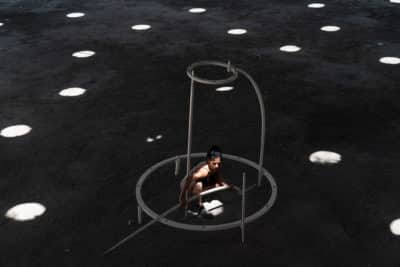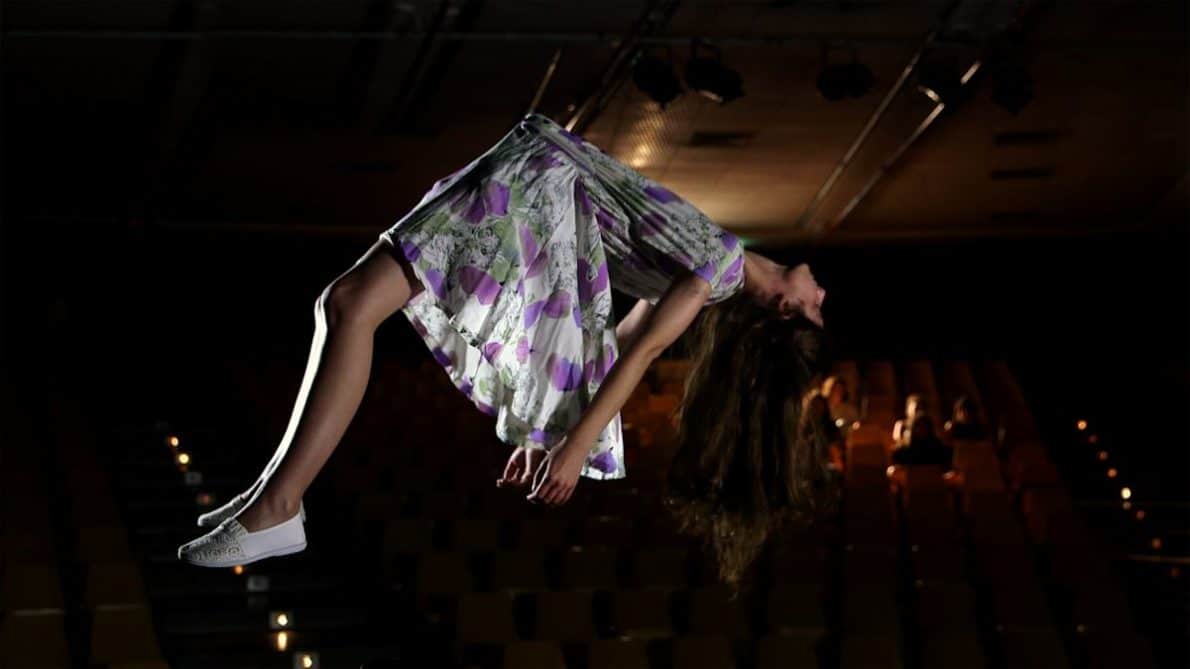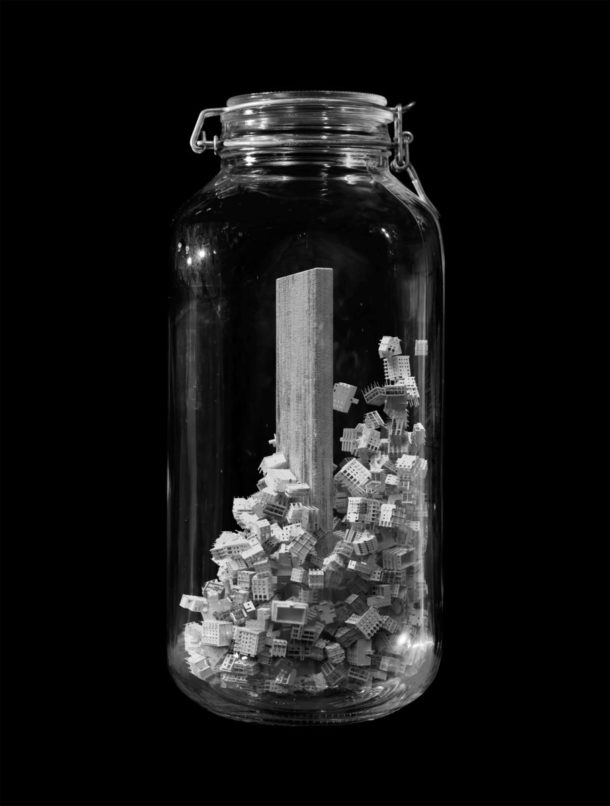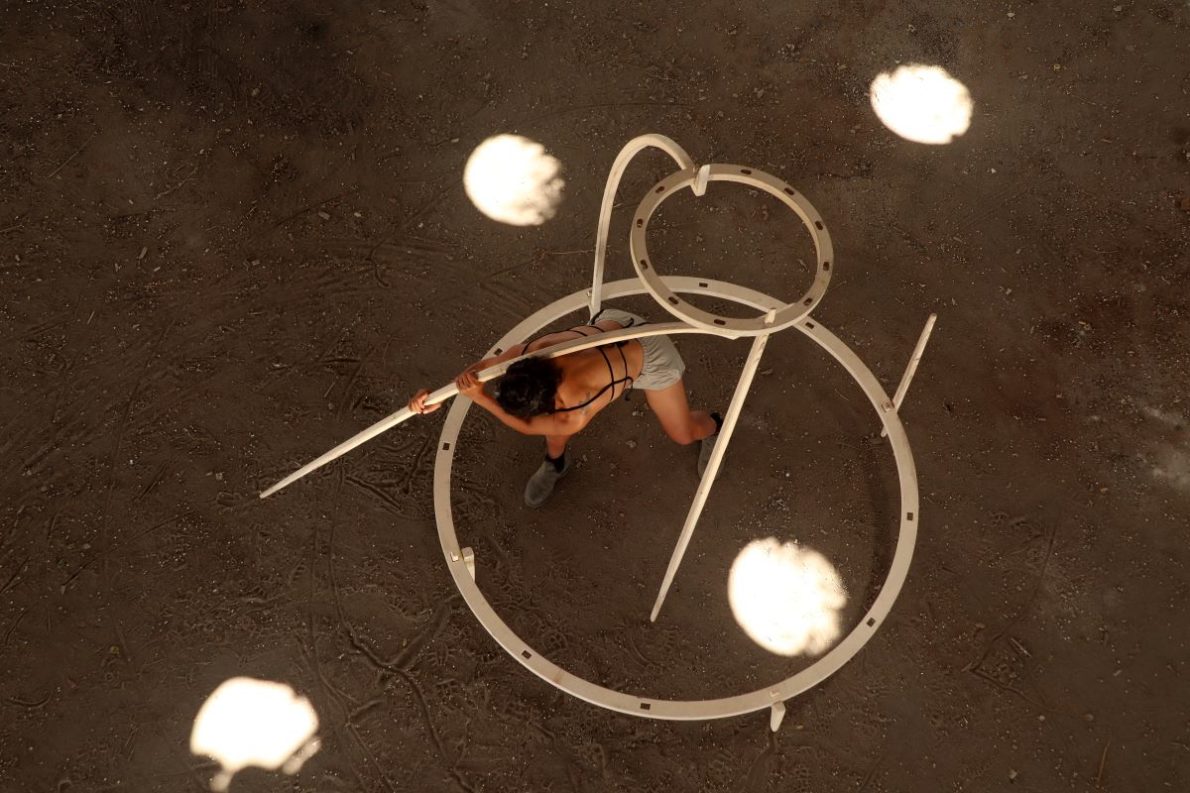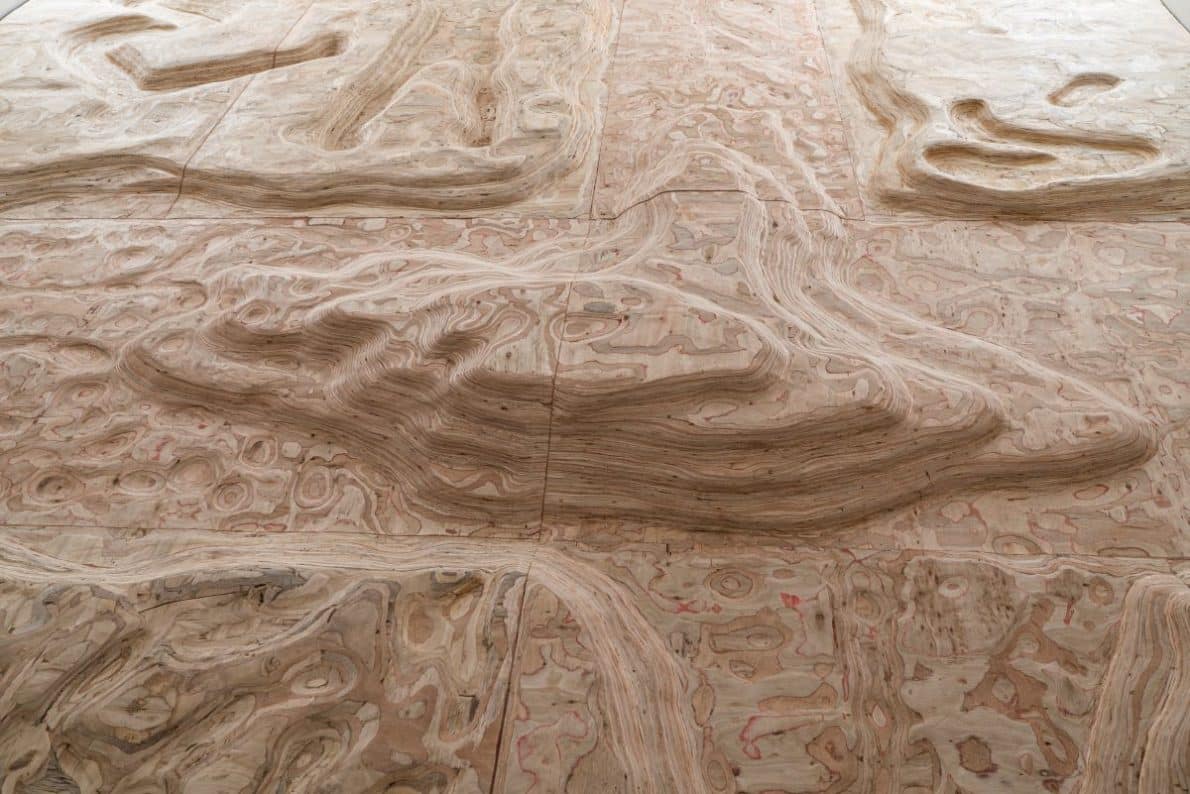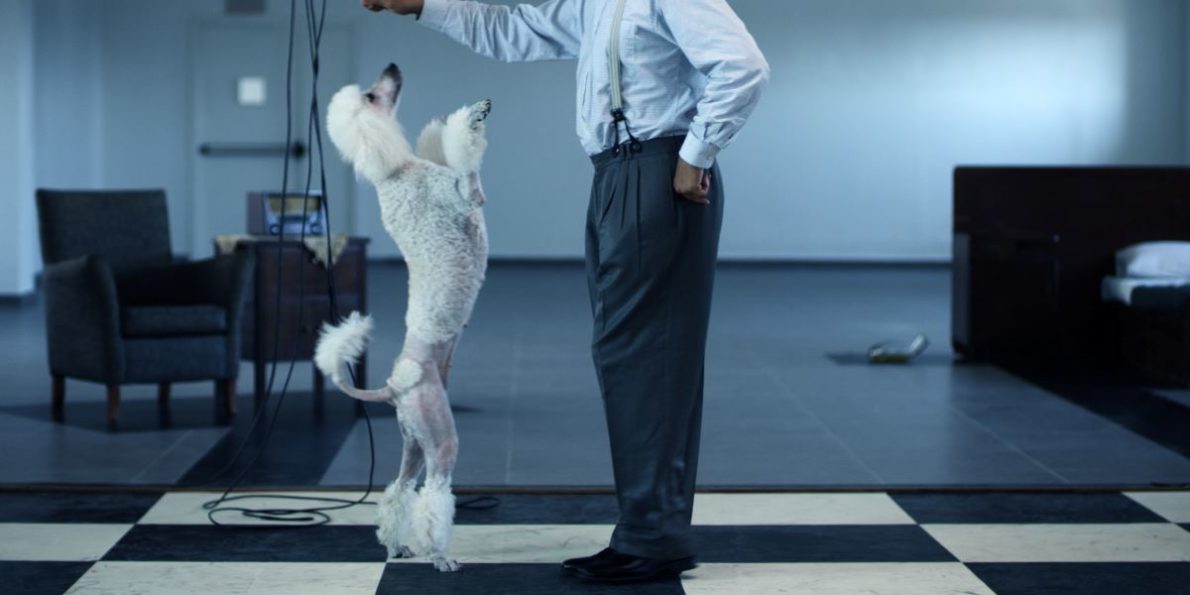Dance is, for the most part, a wordless expression of an idea as well as an opportunity to discharge tension and find release. Similar to most performance arts, dance takes place in a specific place at a given time. In the exhibition “MOTION”, the artists chose to commemorate movement and dance resonating different eras, expressing ritual, conflict, and sacrifice. The tension between visual art and movement runs through the exhibit to link works in space and time.
Some of the artists sought to examine the relationship between movement and cessation of movement, between the human being and nature, and body and material. In artworks by Bar From, and Ayelet Carmi and Meirav Heiman, movement becomes compressed into an object that raises questions about the dimension of time as contrasted with matter. At the center of the work by Carmi and Heiman stands an object which may be a sculpture or perhaps a scientific instrument which makes marks and casts shadows on the ground as it is used. The circular movement created by the figure of the research scientist in their video art, as she revolves with the installation, follows research conducted to understand many natural concepts. The rotation enables her to measure the area and hide particles of light and sand in it. While doing so, dozens of light circles move on and around her body in an infinite dance of light.
Bar From also uses a large object. Made of wood, its exposed layers reveal concave and convex areas of the surface simulating hills and valleys. Through this process From freezes moments in time: the encounter between the body and the wooden floor creates a mark; various spatial compositions beginning as movement end with a “freeze-frame” in space. The large piece invites visitor participation – touch it, step on it, lie down in it, or look at it from above.
Another piece enabling visitor interventions is by Assaf Gruber. In a series of sculptural actions he sliced and cut off dozens of colorful bowling balls. The act of slicing, arising from his curiosity to examine the inner contents of the ball, neutralized their form and functions of play and movement. By installing them as a labyrinth, the balls create a new movement – visitors who must make their way between the maze of balls move in a different way, as forced upon them by the balls.
The necessity for movement is also expressed in works by Yael Balaban. Although a dancer’s image is the overt embodiment of dance, Balaban’s artwork offers a covert movement – the artist’s motions while using a Rapidograph pen. Balaban repeatedly goes over the stamped symbol from her family’s past: it is the official stamp on a document clearing her grandfather’s name, years after he was executed by the Soviet regime, accused of being a traitor. She creates images on the paper with the thin pen in orderly and repetitious movements in contrast to the chaotic splashes of color.
Similar duality may be found in the video art by Ronen Sharabani. On one side is a bottle, an ordinary item from everyday life; the other side of the space expresses an attempt at creating a new ecological system composed of basic “habitats,” as the artist stated, houses in which people live, but with new rules and independent of external conditions. While the mixture of structures is reminiscent of snowflakes falling inside a crystal ball, a concrete wall appears in the space as a kind of separation barrier. In complete contrast to concrete’s properties as a static separation object, the wall revolves and begins a mixture process enabling the structures to make the transition from side to side. The figures appearing on both sides of the wall complement its movement, thus raising questions: Are they the source of the power turning the wall. Will they succeed in penetrating the concrete cover and meet? At the conclusion of the process, the figures disappear, the buildings thin out, and the bottle returns to its starting point with the basic material bursting out in exploding fragments which, in turn, comprise a new ecological system.
Hilla Ben Ari‘s images of tension and resting in place also challenge the dimension of time and the force of gravity in what seems a proposal to stop both. Ben Ari stages moments of stopped-time, freezing the vibration of movement, forcing the viewer to pay close attention, follow the tension, breath, blink, and muscular effort of the nearly life-size figures. In the final section of the exhibition, Maya Zack also strives to have the visitor pay careful attention to details through her engagement with the human attempt to enforce shape and order to reality through processes of training and regimentation. In an environment in which on the surface everything takes place according to plan, there is a sudden disruption breaching the order.
Nirit Dahan
Yael Balaban
Hila Ben Ari
Raya Bruckenthal
Eitan Buganim
Roy Efrat
Bar From
Assaf Gruber
Meirav Heiman and Ayelet Carmi
Yanir Shani
Ronen Sharabani
Maya Zack
Be'er Sheva municipality
Kivunim
Ministry of Culture and Sport

